








































The slim Fife rater Mikado was not an obvious choice for a growing family with four kids – but she’s taken them cruising and racing for more than 25 years
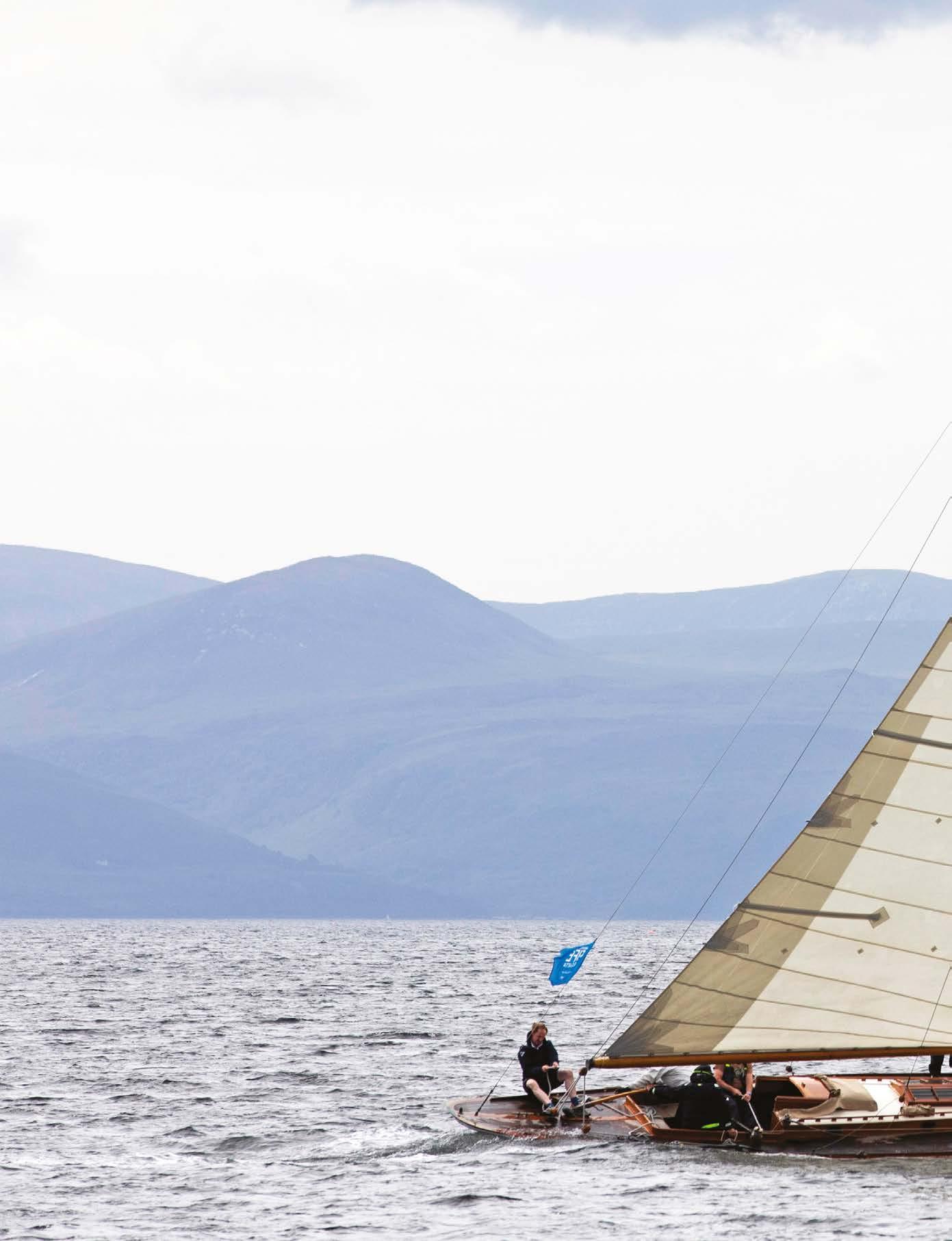 WORDS NIGEL SHARP PHOTOS BEN WOOD
WORDS NIGEL SHARP PHOTOS BEN WOOD

1897
BEMBRIDGE
REDWINGS
LOA
22ft 1in (6.7m)
LWL 16ft (4.9m)
BEAM 5ft 5in (1.7m)
DRAFT 2ft 11in (0.9m)
DISPLACEMENT
1.2 tonnes
SAIL AREA 200 sqft (18.6m2)
1838
BEMBRIDGE
REDWINGS
LOA 27ft 11in (8.6m)
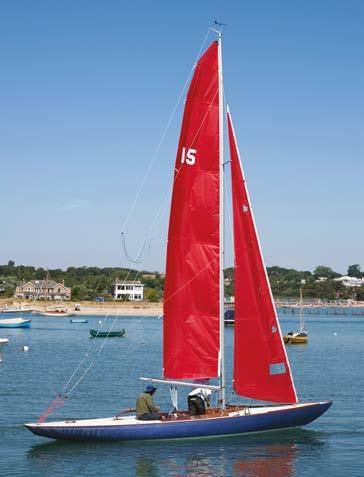
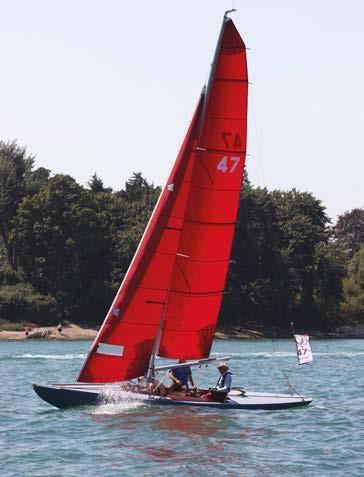
LWL 20ft (7m)
BEAM 5ft 6in (1.7m)
DRAFT 3ft 3in (0.9m)
DISPLACEMENT
1.6 tonnes
SAIL AREA 200 sqft (18.6m2)
Above left to right: No 15 Ibis, No 21 Redwing, No 47 Musicus
Below: Redwing blueprint of sail plan from December 1937 from Camper Nicholson


albeit not too badly as they did manage to win three races and come second overall in Cowes Week last year.
Rory Morrison, who has recently taken over as Class Captain, thinks that the reason Redwings appeal to such a wide age group is that “they are exciting enough for the younger generation to want to be part of it, they’re challenging enough for the kind of the middle generation to have plenty to play with, and they’re forgiving enough that sailors in their 70s and 80s can still go racing.”
Since the early 1970s, the Redwing class has owned a 140m quay on the south east side of Bembridge Harbour, originally built for British Rail around the turn of the 19th century. This has on it twenty-four sheds which are leased to Redwing owners, and two two-tonne capacity cranes, which owners can use to launch and lift their own boats. The class is well served by two local boatyards: AA Coombes which is just across the road from Redwing Quay, and Will Squibb Boatbuilders the other side of the harbour. While racing away from Bembridge has diminished over the years, one event which has endured for the class is Cowes Week. “The pilgrimage to Cowes is a big part of the culture of the class,” said Rory Morrison, “and we compete for almost all of our most valuable trophies there.” Twenty-six Redwings raced there this year, with the overall prize going to No 30 Quail (the boat which, in 2019, won the Queen Victoria Jubilee Cup for being the top boat of all classes in Cowes Week).
Not surprisingly, the class made the most of celebrating its 125th anniversary this year. Thirty-two Redwings – nine of them timber, three of which were Poole boats which came to Bembridge specially for the occasion – took part in a parade of sail during which the salute was taken by the Isle of Wight Lord Lieutenant Susie Sheldon, the Commodore of Bembridge SC Charles Abel-Smith and the Redwing Commodore Robin Ebsworth, on the 1922 motor yacht Lady Agnes. But the major celebration was a Paella evening on Redwing Quay, with more than 130 people attending, the youngest of whom was two and the eldest “more like 82,” said Lisa Jessel. “We wanted an all-inclusive evening that was original and special to the class. We opened our sheds, put up bunting and danced the night away.”

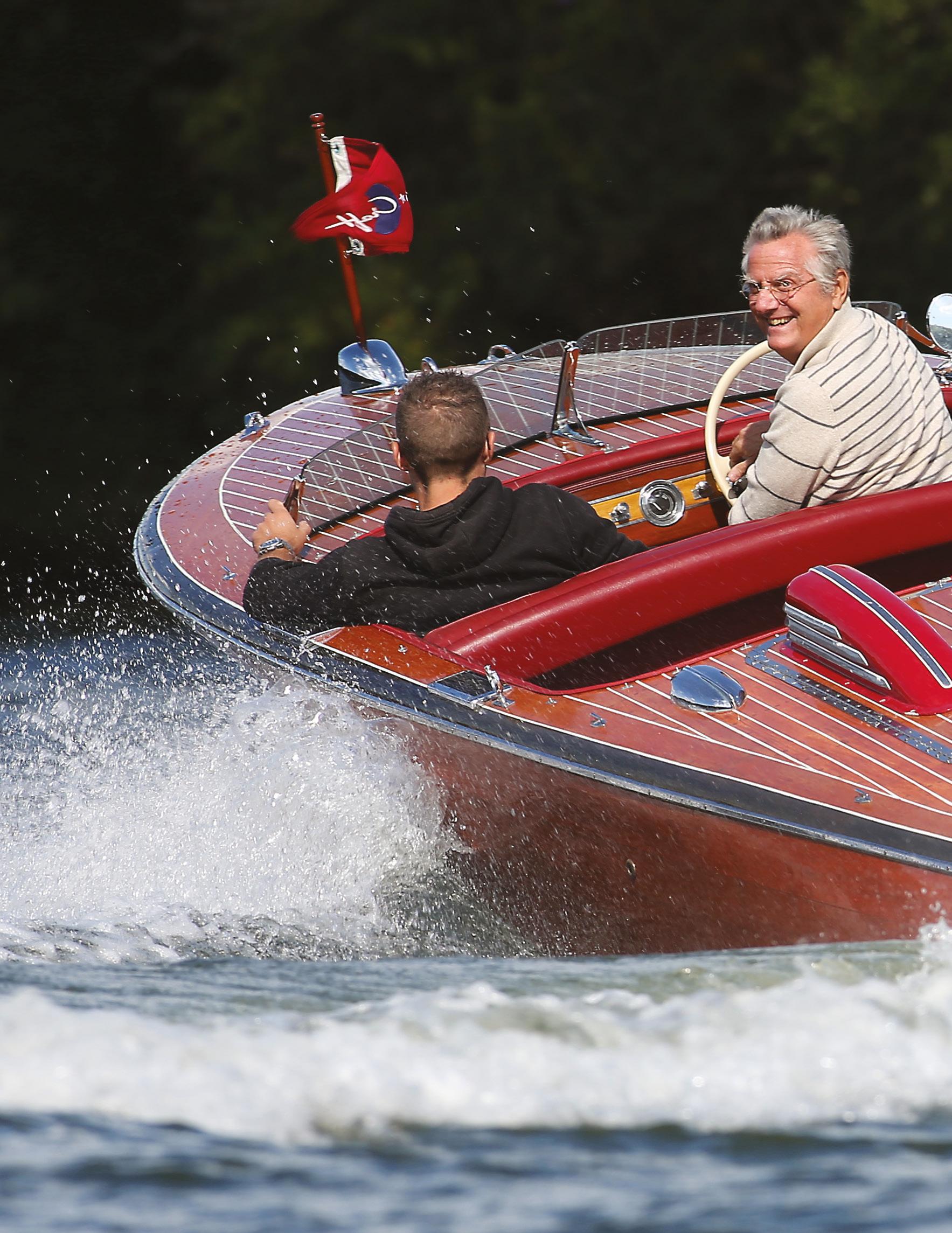
Chris-Craft, pioneers in affordable luxury, started life a century ago. After an estimated 250,000 boats built, there is still a good number a oat today
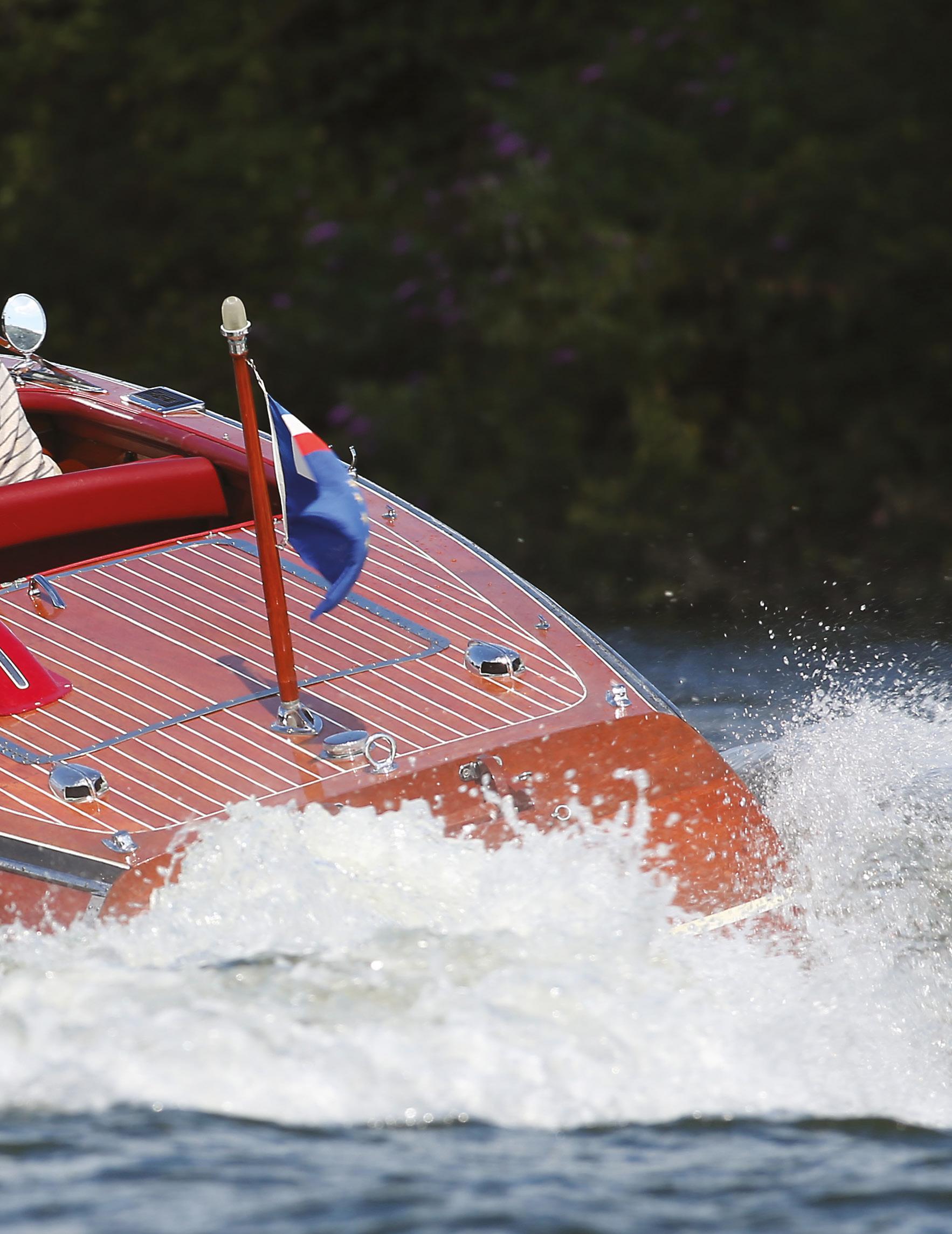 TEXT GERALD GUETAT PHOTOS HENRI THIBAULT ARCHIVES AUTHOR’S COLLECTION AND CHRIS-CRAFT
TEXT GERALD GUETAT PHOTOS HENRI THIBAULT ARCHIVES AUTHOR’S COLLECTION AND CHRIS-CRAFT
The restoration of the 131ft (40m) schooner Coronet, which has been happening in fits and starts since 1995, has entered a new phase, with the plan to move it to the Henry du Pont Preservation Shipyard, part of the Mystic Seaport Museum in nearby Connecticut. The plan is to complete the 1885 yacht in three years.
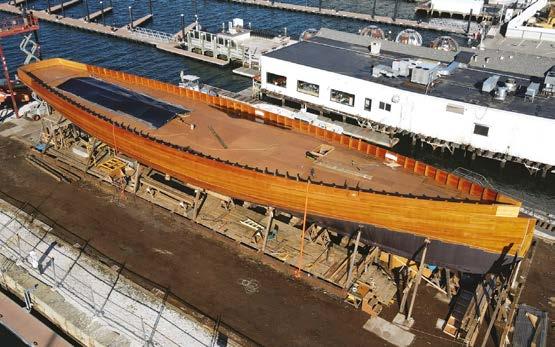
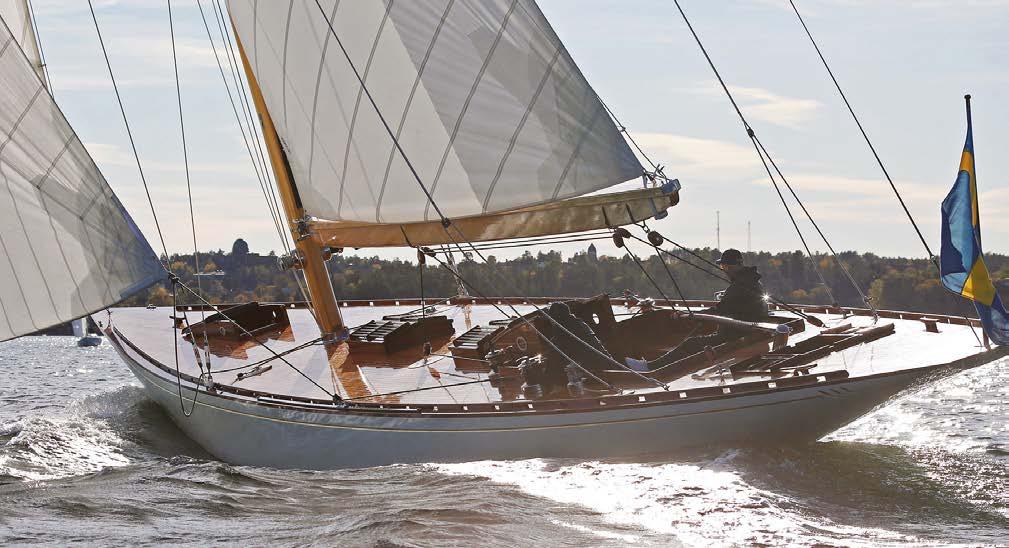
The restoration of Coronet has long been known about but completion has proved elusive for the last 27 years, despite a stream of great boatbuilders and suitably high-profile owners, like the late Bob McNeil, who, with boatbuilder Je Rutherford, was also behind the restoration of the magnificent steam yacht Cangarda. At that time, around a decade ago, the plan was to restore the great schooner as closely as feasible to original tech – so no engine and, no electricity, meaning oil lamps and ice for lighting and refrigeration. This is a level of ambition towards authenticity probably never seen on any restoration intending to go to sea. Coronet is often cited as being America’s most historic yacht – the last grand survivor of her era. Her story certainly bears out the claim. She was designed by William Townsend and built (by the New York City yard of C&R Poillon) for Rufus T Bush, who put up a $10,000 challenge against all-comers for a transatlantic race, a challenge that was taken up by Caldwell Hart Colt’s and his yacht Dauntless. On 28 March, 1887, The New York Times devoted its entire front page to Coronet’s victory. Rufus and his son Irving T Bush then circumnavigated the globe on their schooner, becoming the first registered yacht to pass Cape Horn from east to west in the process.
Edited by Ste an Meyric Hughes: +44 (0)207 349 3758
Email:ste an@classicboat.co.uk
Throughout November, Coronet will be moved from dry dock at IYRS and hauled to Mystic in a complex and meticulously planned series of events. Coronet will reside there until restoration is complete, a process that is expected to take approximately three years.
The schooner was recently bought by Crew, a New York-based company run by brothers Alex and Miles Pincus. The purchase and continued restoration e orts of Coronet are in line with Crew’s long history of historic vessel restoration. The museum and the team at the Du Pont Shipyard have worked with Crew over the years to maintain vessels in their existing fleet, most recently, Pilot, a wooden schooner with a nearly 100-year history that now serves as a seasonal oyster bar located at Brooklyn Bridge Park’s Pier 6. “Working with Crew has always been a pleasure, and they understand the historic preservation of their fleet,” says Chris Gasiorek at Mystic Seaport Museum. Several factors, including weather, will a ect the departure date of Coronet from IYRS and arrival at the museum. Current ETA at the museum is 1 December, 2022.
The 1930-built 12-M yacht Princess Svanevit (ex Barranquilla), is sailing, after a restoration that started in 2017. She’s said to be the longest 12 ever built (by August Plym to a design by Gustaf Estlander), and her interior, which stands alone in its elaborate complexity, has been displayed in an art museum this year, but will soon be reinstated on the yacht.
The unstoppable Irish yacht conservator Hal Sisk is deep into yet another project, this one on the yacht built for, and owned by his father, John Sisk. Ian Squire at Rossbrin Boatyard is restoring the 1954 8-M Cruiser Racer Marian Maid, built in Dun Laoghaire to a Knud Reimers design. When complete, she will have fully electric motors instead of diesel. She arrived at the yard in October 2021, and Ian has been doing most of the work himself, with colleague Maja helping with cleaning and sanding. The rigging is underway through Harry Lewis of Custom Rigging based in Crosshaven. The sails are being made from new by Barry Hayes of UK Sails, for a slightly re-designed sail plan to include an electric furler. The aim is to give the Sisk brothers a comfortable sailing boat for classic racing and cruising. Apart from hoisting the mainsail on
deck, the intention is to run the boat from the cockpit. All the electrics have been replaced and re-wired including the motors and navigational gear. Domestic power is also electric.
The biggest challenge has been replacing the 36 Yanmar diesel engine with the two bespoke electric motors. All the framing and positioning and coupling to the two drives has been complicated. Making them totally independent of each other has been a challenge. The installation involved a lot of mock-ups and conversations with suppliers. The motor drives are belt driven to reduction and then a one-to-one belt drive across to each shaft. The intention is for the boat to be taken to Dublin in the next few months. A few more coats of varnish are due before the stanchions can go back on.



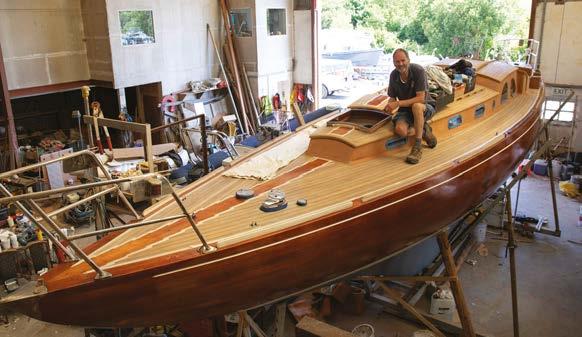
On the island of Orust, o Sweden’s west coast, the Lilla Kålvik boatyard, where beautiful boats have grown under skilled hands for eight generations, things are on the up, writes Erik Norlander. The yard is currently run by mother-and-son team Christina and Johnny Andersson. Nearly three centuries on from 1740, when Anders Svensson built a fishing boat, the pair are booked with orders, such that the waiting list has grown from two to three years. Two boats are built here every year, with sometimes a smaller one too. “I have never experienced such pressure” says Johnny. The main types in build are Snipa, the Julle, and the Adunge which is reputed for its sailing qualities. The hulls are in oak, which comes from Poland, with the rest of the wood being local. A 20ft (6.1m) Julle usually takes about 1,500 hours to complete and is held together by around 1,600 rivets in the hull and another 250 in the frames. These are either in copper or juniper. Johnny favours the latter, saying that juniper rivets usually outlast the boat. Audange number 100 is now in build. The photo shows a Julle with a flat stern, built in clinker. Sometimes they are in carvel planking.
Boatbuilder Leo Goolden, who is now well into the fitting-out stage on the restoration of his 48ft (15m) yacht Tally Ho, was looking for a tender suitable for the cruising life. Ideally, it should be hard-shelled rather than inflatable, rugged, capable of carrying a decent load of passengers or shopping, but able to sit on Tally Ho’s deck without obstructing a side deck or obscuring a skylight. Finally, it should be fun to row or sail, because having a decent dinghy to enjoy at anchorage is a great pleasure of cruising under sail, says Leo. Tally Ho designer Albert Strange did design a tender for the yacht, but the heavy, motor dinghy of 14ft (4.27m) would have been better suited to leaving on a buoy while out sailing for the day, than it would to cruising. The answer was a PT11, a nesting wooden tender designed by Port Townsend boatbuilder Russel Brown. It’s light (90lb or about 40kg in total), and the two halves attach or separate in moments. According to Leo it rows well, and the rig is a wonder of simplicity, with rigging and de-rigging taking about two minutes each. These PT11s are, according to quite a few who know them, the last word in tenders: not particularly cheap or easy to build, but as Leo puts it: “There’s nothing out there that does so much so well.” They are available as kits from Chesapeake Light Craft – clcboats.com.
In November’s Yard News, we said that Cox’s Boatyard is in Ipswich, Su olk. It is actually in Barton Turf, Norfolk. Our apologies.




